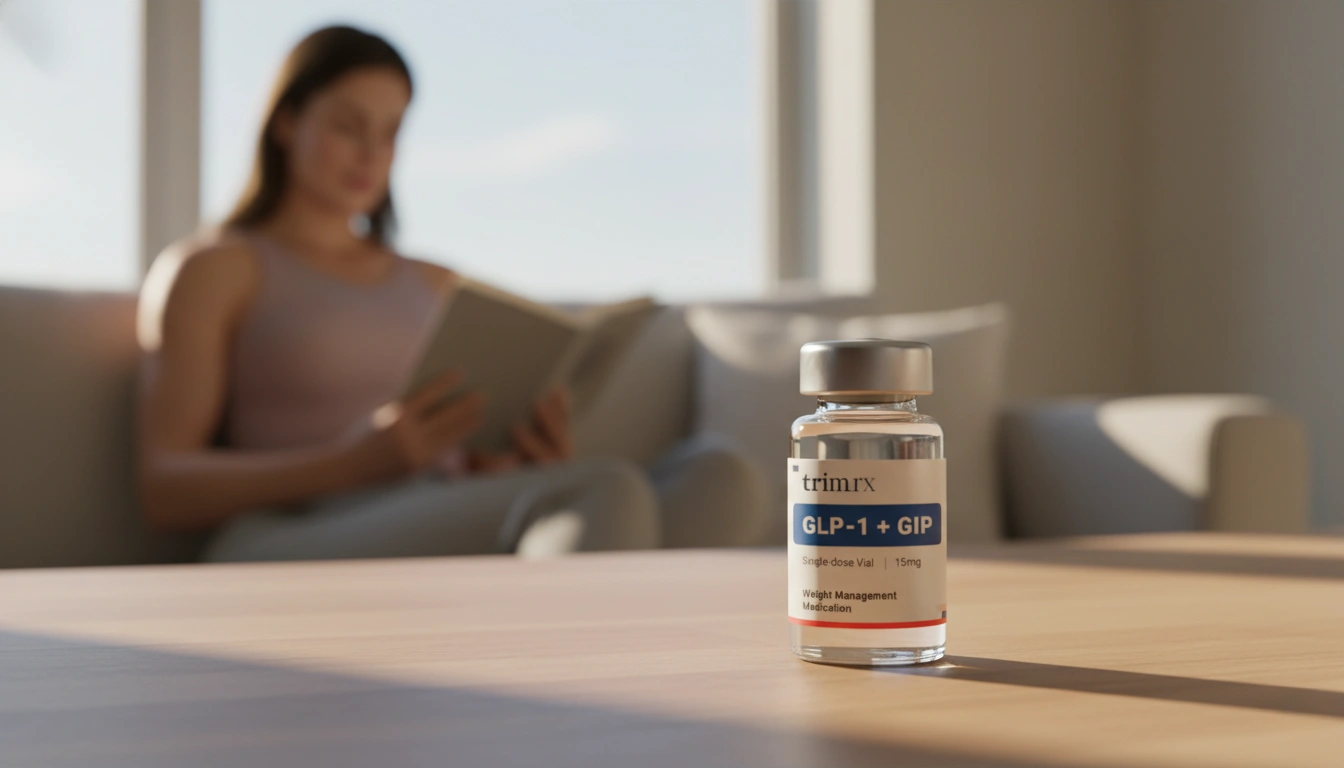Understanding the Link Between GLP-1 Medications and Pancreatitis

Introduction
Every year, millions of people turn to medications to assist in managing diabetes and achieving weight loss goals. Among these, glucagon-like peptide-1 (GLP-1) receptor agonists have gained significant popularity due to their ability to improve glycemic control and promote weight loss. However, a rising concern has emerged regarding the potential side effects of these medications, particularly the risk of pancreatitis. This article aims to delve into the complexities surrounding GLP-1 medications and their association with pancreatitis, providing readers with a comprehensive understanding of why this connection exists.
As we explore this topic, we will address the mechanisms behind GLP-1 medications, the incidence of pancreatitis, risk factors, and what this means for patients considering these treatment options. By the end of this post, we hope to clarify common misconceptions and equip you with the knowledge to make informed decisions about your health.
What Are GLP-1 Receptor Agonists?
GLP-1 receptor agonists are a class of medications that mimic the action of the GLP-1 hormone, which is naturally produced in the gut. This hormone plays a crucial role in glucose metabolism by stimulating insulin secretion in response to meals, inhibiting glucagon release, and slowing gastric emptying. These actions help reduce blood sugar levels and promote satiety, making GLP-1 receptor agonists effective for managing type 2 diabetes and aiding in weight loss.
Some of the most commonly prescribed GLP-1 medications include:
- Semaglutide (Ozempic®, Wegovy®)
- Liraglutide (Victoza®, Saxenda®)
- Dulaglutide (Trulicity)
- Exenatide (Byetta, Bydureon)
While these medications have demonstrated significant benefits in managing diabetes and assisting with weight loss, understanding their potential side effects is equally important.
The Connection Between GLP-1 Medications and Pancreatitis
The primary focus of our discussion centers on the association between GLP-1 receptor agonists and pancreatitis—a condition characterized by inflammation of the pancreas. The pancreas is a vital organ responsible for producing digestive enzymes and hormones, including insulin. When the pancreas becomes inflamed, it can result in severe pain and complications, some of which may be life-threatening.
Mechanisms Behind the Potential Risk
The exact mechanisms by which GLP-1 medications may contribute to pancreatitis are not entirely understood. However, several theories exist that explain this connection:
-
Increased Pancreatic Activity: GLP-1 receptor agonists stimulate the pancreas to produce insulin. In individuals with pre-existing pancreatic inflammation or susceptibility, this increased activity may exacerbate their condition, leading to pancreatitis.
-
Changes in Pancreatic Enzyme Levels: Some studies have suggested that GLP-1 medications can lead to elevated levels of pancreatic enzymes such as amylase and lipase. High levels of these enzymes are indicative of pancreatic stress and may signal the onset of pancreatitis.
-
Genetic Predisposition: Certain individuals may have a genetic predisposition that makes them more susceptible to pancreatitis when taking GLP-1 medications. Factors such as a family history of pancreatitis or other gastrointestinal conditions may increase the risk.
Incidence of Pancreatitis
Research into the incidence of pancreatitis associated with GLP-1 medications has produced mixed results. While pancreatitis is acknowledged as a potential side effect, the actual incidence appears to be relatively low. For example, studies have shown that while there is a slight increase in the risk of developing pancreatitis among users of GLP-1 receptor agonists, the absolute risk remains statistically small.
In a systematic review and meta-analysis, it was found that the incidence of pancreatitis in patients treated with GLP-1 medications is low compared to the overall number of patients treated. This suggests that, while the risk exists, it may not be significant enough to outweigh the benefits of managing diabetes and obesity through these medications.
Risk Factors for GLP-1 Induced Pancreatitis
Understanding the risk factors that can increase the likelihood of developing pancreatitis while on GLP-1 medications is crucial for both patients and healthcare providers. Some key risk factors include:
-
History of Pancreatitis: Individuals with a prior history of pancreatitis are at an elevated risk of recurrence when taking GLP-1 medications. This underscores the importance of thorough medical histories before initiating treatment.
-
Type 2 Diabetes: Patients with type 2 diabetes may have pre-existing pancreatic issues that can increase the risk of pancreatitis when treated with GLP-1 receptor agonists.
-
Chronic Kidney Disease: Advanced stages of chronic kidney disease (CKD) are associated with a higher risk of pancreatitis in patients taking GLP-1 medications.
-
Tobacco Use: Smoking is known to have detrimental effects on pancreatic health and can further increase the risk of pancreatitis among GLP-1 users.
-
Obesity: Interestingly, some studies suggest that a higher body mass index (BMI) may actually confer a protective effect against pancreatitis in patients taking GLP-1 medications.
In light of these risk factors, it is essential for individuals considering GLP-1 therapy to engage in open discussions with their healthcare providers, weighing the potential benefits against the risks based on their personal health history.
Monitoring and Management of Pancreatitis in Patients on GLP-1 Medications
For patients taking GLP-1 receptor agonists, awareness and monitoring for symptoms of pancreatitis are essential. Common symptoms include:
- Severe abdominal pain that may radiate to the back
- Nausea and vomiting
- Fever
- Rapid heartbeat
If any of these symptoms occur, it is crucial to seek medical attention promptly. Healthcare providers may conduct blood tests to measure amylase and lipase levels—enzymes that can indicate pancreatic inflammation. Imaging studies, such as ultrasound or CT scans, may also be employed to assess the pancreas’s condition.
In cases where pancreatitis is diagnosed, the typical management approach involves:
-
Discontinuation of GLP-1 Medications: Patients will often be advised to stop taking GLP-1 medications immediately upon diagnosis to prevent further complications.
-
Supportive Care: Treatment usually includes supportive measures such as hydration, pain management, and dietary changes. In mild cases, symptoms may resolve with conservative management.
-
Assessment of Underlying Causes: Healthcare providers may conduct a thorough evaluation to identify any underlying causes of pancreatitis, ensuring that all contributing factors are addressed.
-
Long-term Monitoring: After experiencing pancreatitis, patients may require long-term follow-up to monitor pancreatic health and consider alternative diabetes management strategies.
The Importance of Informed Decision-Making
As individuals consider GLP-1 receptor agonists as a treatment option, it is essential to be well-informed. Patients should engage in dialogue with their healthcare providers about the potential risks and benefits associated with these medications. This includes discussing personal risk factors for pancreatitis and any previous medical history that may influence treatment decisions.
At TrimRx, we believe in empowering our patients through education and personalized care. Our approach combines cutting-edge telehealth innovations with medically supervised treatments, ensuring that each individual receives comprehensive support throughout their weight loss journey. If you are considering GLP-1 medications or want to explore personalized weight loss solutions, we encourage you to take our free assessment quiz to determine your eligibility for our prescription weight loss programs.
In addition to prescription medications, we also offer quick-access supplements to enhance your overall wellness during your weight loss journey. Our GLP-1 Daily Support and Weight Loss Boost supplements can provide valuable support alongside your weight loss efforts.
Conclusion
The relationship between GLP-1 medications and pancreatitis is a nuanced topic that requires careful consideration. While these medications have been shown to provide significant benefits for individuals managing diabetes and obesity, it is vital to remain aware of the potential risks, including pancreatitis.
By understanding the mechanisms behind GLP-1 medications, the incidence of pancreatitis, and the associated risk factors, patients can make informed decisions about their treatment options. Open communication with healthcare providers and monitoring for symptoms are essential components of safe medication management.
As we continue to advance in the field of weight loss and diabetes management, TrimRx remains committed to providing personalized, medically supervised care that prioritizes safety, effectiveness, and individualized support. We invite you to explore our offerings and take the first step towards a healthier lifestyle today.
FAQ
What are the symptoms of pancreatitis?
Symptoms of pancreatitis typically include severe abdominal pain, nausea, vomiting, fever, and rapid heartbeat. If you experience any of these symptoms while taking GLP-1 medications, seek medical attention immediately.
How is pancreatitis diagnosed?
Diagnosis usually involves blood tests to measure enzyme levels like amylase and lipase, as well as imaging studies to assess the pancreas’s condition.
Can GLP-1 medications cause pancreatic cancer?
While some studies have suggested a correlation between GLP-1 medications and pancreatic cancer, no definitive causation has been established. Ongoing research is needed to fully understand these potential risks.
How can I reduce my risk of pancreatitis while taking GLP-1 medications?
Discuss your medical history and any risk factors with your healthcare provider before starting GLP-1 medications. Regular monitoring and awareness of symptoms are also crucial.
What should I do if I experience symptoms of pancreatitis?
If you notice symptoms such as severe abdominal pain or nausea while taking GLP-1 medications, seek medical attention immediately for proper evaluation and management.
By understanding the complexities of GLP-1 medications and their potential link to pancreatitis, we can collectively navigate the journey toward better health and well-being. Together, we can achieve sustainable weight loss and a healthier lifestyle.

Transforming Lives, One Step at a Time
Keep reading
Vitamin B12 and GLP-1 Medications: What to Know
GLP-1 medications can lower B12 absorption and intake; learn symptoms, food sources, supplement options, and how to monitor levels.
Semaglutide Injection Site Reactions: What To Know
Learn why semaglutide injections can cause redness, swelling or nodules, how to prevent and treat them, and when to seek medical care.
TrimRx vs Friday’s
Compare TrimRx and Friday’s telehealth GLP-1 weight-loss programs: pricing, medical support, coaching, delivery, and which fits your needs.



